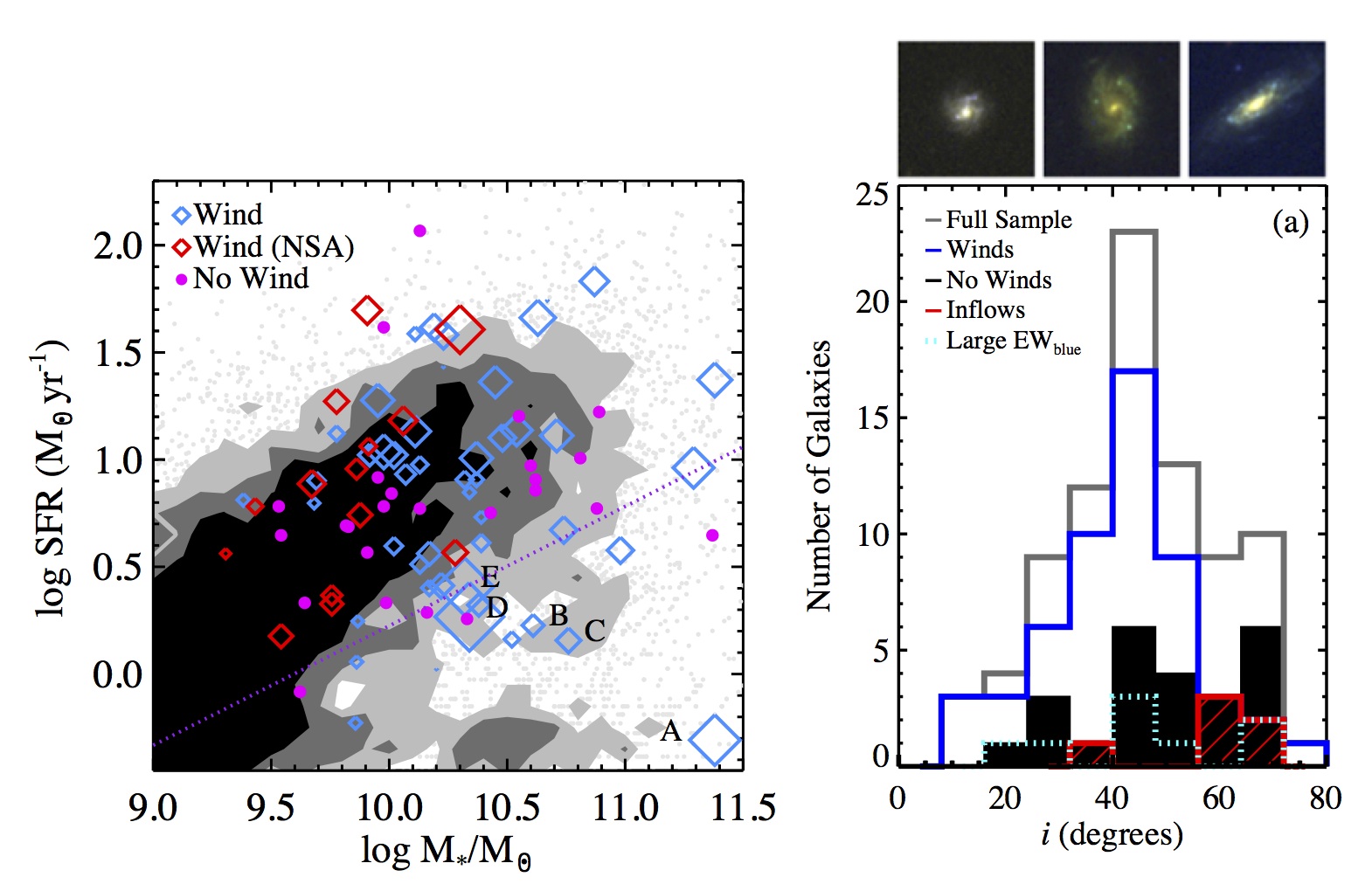Cool gas outflows from distant, star-forming galaxies are now known to be quite common. In fact, in a sample of ~100 star-forming galaxies we detected evidence of outflows (i.e., blueshifted metal absorption lines) from ~2/3 of the objects. Their distribution on the star-forming sequence is shown in the left-hand Figure above in blue and red diamonds. Galaxies in which we do not detect winds are marked with magenta points. The gray contours show the distribution of a much larger sample of galaxies at z~0.5 taken from Barro et al. (2011). All together, the Figure shows that our outflow detection rate does not depend strongly on the star formation rate or stellar mass of our sample galaxies.
At right, we show the distribution of inclinations for galaxies with disk-like morphologies drawn from the same sample, along with Hubble Space Telescope images (Giavalisco et al. 2004) of three systems having low, intermediate, and high inclinations. The distribution for galaxies with winds is shown in blue, and the distributions for galaxies with inflows and without winds/inflows are shown in red and solid black, respectively. Galaxies viewed face-on (with low inclinations) are much more likely to drive detected winds than galaxies viewed edge-on. Combined with the aforementioned weak dependence of outflow detection rate on intrinsic galaxy properties, this suggests that winds really do occur in almost every galaxy on the star-forming sequence at z~0.5, and that they are simply more difficult to detect when a galaxy is viewed from the ‘wrong’ direction. You can read more about these findings here.
